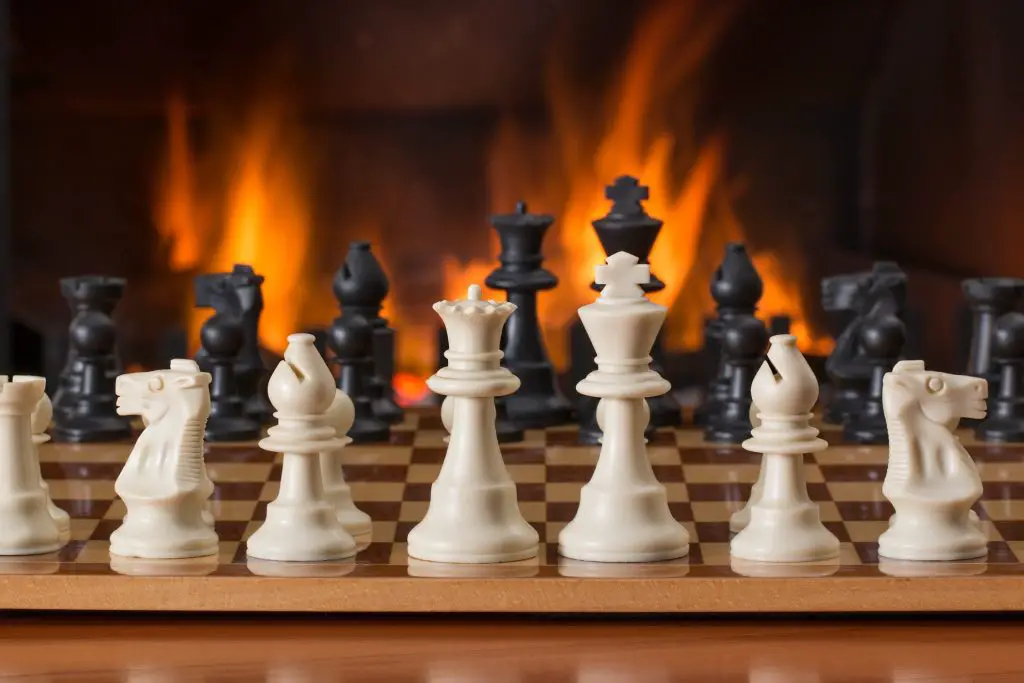Chess notation is a crucial aspect of the game, allowing players to record and communicate their moves in a standardized format. Notation is essential for reviewing and analyzing games, as well as for preparing for future matches. It is also essential for studying and appreciating the game’s complexities and strategies. This article will explore what do chess players write down during a game, from basic moves to more advanced notation and additional notes, by understanding what is being recorded and why we can gain a deeper appreciation for the game of chess and the skills of its players.

Basic Chess Notation :
Contents
Basic chess notation is a simple way to record the moves made during a chess game. The most commonly used notation system is called algebraic notation. This system uses letters to denote the columns and numbers to denote the rows of the chessboard.
Each square on the board is identified by combining a letter and a number. The letter identifies the column and the number identifies the row. For example, the square in the bottom-left corner of the board is called “a1”, while the square in the top-right corner is called “h8”.
To record a move using algebraic notation, the starting square is listed first, followed by the ending square. For example, if a player moves their pawn from e2 to e4, it would be recorded as “e4”. Similarly, if a player moves their knight from g1 to f3, it would be recorded as “Nf3”.
Another aspect of basic notation is using symbols to indicate different types of moves. For example, a “+” symbol indicates a check, while a “#” symbol indicates a checkmate. An “x” symbol is used to indicate a capture, while an “=” symbol is used to indicate a promotion.
Basic chess notation is a simple and intuitive way to record the moves made during a chess game. By using this system, players can quickly review and analyze their games and communicate with other players about the game.
More Advanced Chess Notation :
As chess players become more experienced, they may use more advanced notation to record their moves. This can include recording variations or alternative moves, which can be helpful when analyzing a game or preparing for future matches.
In addition to basic notation, players may use symbols to indicate the quality of a move. For example, a “!” symbol indicates a good move, while a “!!” symbol indicates an excellent move. Conversely, a “?” symbol indicates a mistake, while a “??” symbol indicates a blunder.
Players may also use brackets to group together related moves or variations. For example, a set of moves may be enclosed in brackets to indicate that they are part of a particular line of play.
Annotated games can be a helpful way to understand advanced notation in action. In these games, skilled player will record their moves along with comments and analyses explaining their thought process and strategy. By studying annotated games, players can learn new ideas and techniques to improve their own play.

Here is an example of advanced notation in action:
1.e4 c5
2.Nf3 Nc6
3.d4 cxd4
4.Nxd4 e5
5.Nb5 d6
6.N1c3 a6
7.Na3 b5
8.Nd5 Nge7 {This move, developing the knight to attack the c5 pawn, is a common alternative to the more popular 8…Nf6.}
9.c4 Nd4
10.cxb5 Nxd5
, etc.
Additional Notes :
In addition to recording their moves, chess players may also write down other information during a game. This can include time management, such as the amount of time spent on each move or the number of moves remaining until the time control. Some players may also jot down quick analyses or ideas for future moves.
After a game is finished, players can use their notation to analyze their performance and identify areas for improvement. By looking back at their moves, players can see where they made mistakes or missed opportunities. They can also compare their notation with their opponent’s to gain insights into their opponent’s thought process and strategy.
Top-level players often take extensive notes during their games. For example, former world champion Garry Kasparov is known for his detailed notation, which includes an analysis of possible variations and ideas for future moves. Another example is current world champion Magnus Carlsen, who has been seen taking copious notes during his matches.
Notation plays a crucial role in chess, allowing players to record their moves and analyze their games later on. Players can improve their skills by understanding basic and advanced notation and taking their game to the next level.
Chess notation is a fundamental part of the game, allowing players to record their moves and analyze their games. In this article, we explored basic and advanced chess notation, including algebraic notation and symbols used to indicate the quality of moves. We also discussed other information that chess players might write down during a game, such as time management and analysis.
Notation plays a crucial role in the post-game analysis, allowing players to identify areas for improvement and gain insights into their opponent’s strategy. Top-level players often take extensive notes during their games, which can provide a glimpse into their thought processes and strategies.

Overall, understanding chess notation is essential for improving one’s game and appreciating the beauty of chess. By recording and analyzing their moves, players can improve their skills and enjoy the many challenges and complexities this timeless game offers. Whether you’re a beginner or an experienced player, mastering chess notation is a crucial step toward becoming a better chess player. And these are What chess players write down.





